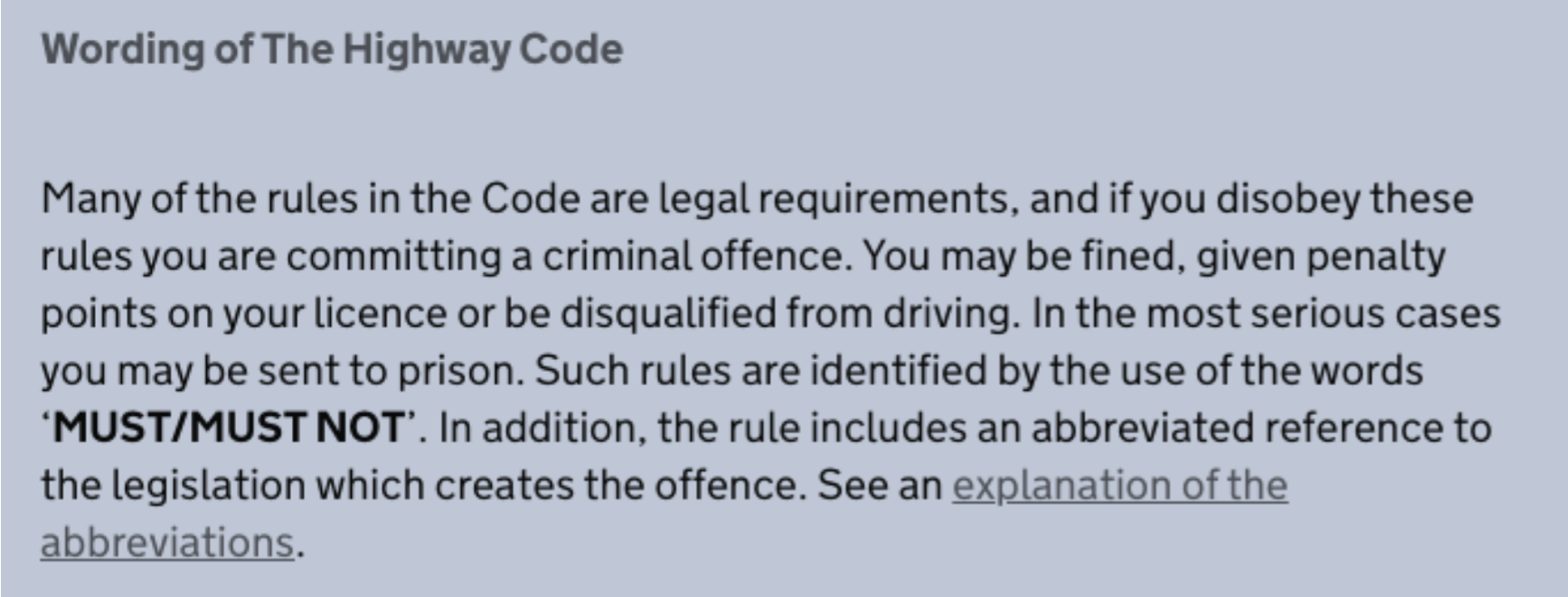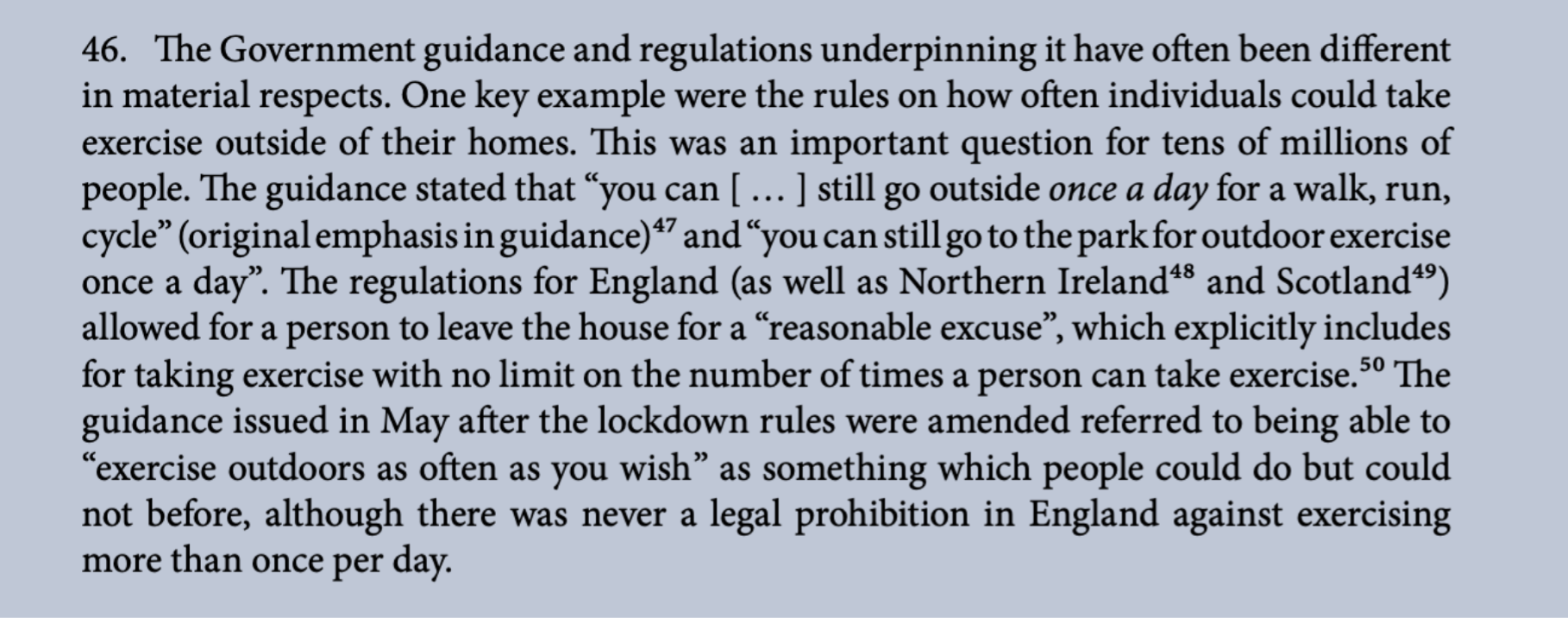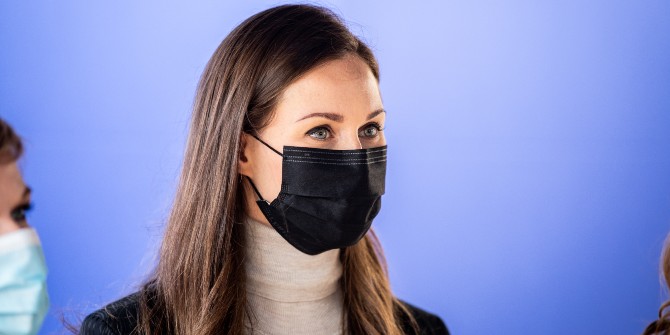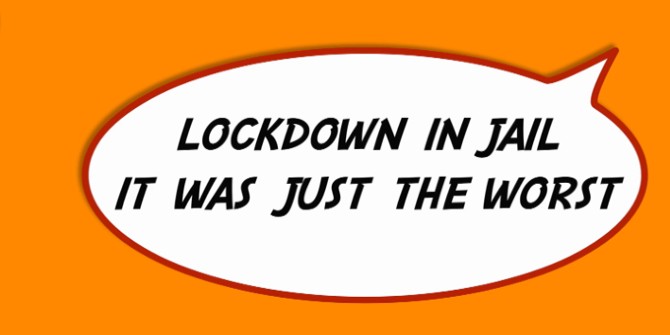The Government has blurred the distinction between law and guidance in the coronavirus regulations, creating confusion among the public and police. Tom Hickman (University College London) says this normative ambiguity is an abuse of authority, and undermines Parliament’s right to scrutinise and approve new law. Despite objections from MPs and peers, it has reinstated the misleading guidance used during the first lockdown.
Let me begin with a challenge. Below is an extract from the official UK government coronavirus guidance applicable in England.

The guidance goes on to list various permitted “reasonable excuses” for leaving home including the following, which is the most significant to most people in that it is probably the most often invoked exception:

The link in this passage to further guidance on “exercising” provides further information on where you can exercise (public outdoor spaces) and with whom (by yourself, household, support or childcare bubble or with one other person). It then states:

Having read those extracts, do you consider that all of the instructions contained in it are legal requirements, breach of which is a criminal offence? If not, can you identify which parts are law and which parts are advice which you are not required to follow?
The answers follow.
An entirely reasonable answer to the first of these questions, and one that I expect most people would give from reading the text, is that everything contained in the extracts I have quoted constitutes law and the police could enforce contraventions encountered as a breach of the criminal law.
Such a position would be reinforced by the key message at the beginning of the coronavirus guidance which states:
 In fact, much of what is stated in the extracts that I have quoted is not law at all but only public health advice:
In fact, much of what is stated in the extracts that I have quoted is not law at all but only public health advice:
• There is no legal requirement to limit exercise to once per day.
• There is no legal requirement to remain in your local area.
• There is no legal requirement to maintain 2m distance from other persons when invoking the exercise exception.
If you were aware of these points, it is probably because they are the most well-publicised examples of non-law contained in the coronavirus guidance. But they are not isolated examples. There are others, which can be more subtle, such as the guidance stating that a person can leave home to buy items from shops that remain open “where necessary” as an “essential activity”, whereas the words of the law give a different impression, stating that people can leave home when it is “reasonably necessary” to shop. The difference may be thought somewhat pedantic, but it in fact has important implications for how people understand their legal obligations and how they understand the severity of the lockdown. All of the examples I have given reflect the manner that the coronavirus guidance is used as a mechanism by which the underlying legal requirements are glossed or, in effect, adjusted to reflect the public health message that the Government wishes to project.

The only way that a person could work out what is law and what is guidance (other than by following @adamwagner1 on Twitter) is by examining the underlying regulations. These are however extremely long—130 pages of legal text—and very complicated. It would be an extremely difficult and time-consuming task for non-lawyers unfamiliar with the nature or form of regulations to try to unpick the differences between the law and guidance. Indeed, the new lockdown laws are particularly obscure as they take the form of amendments to the Tier 4 rules, which is not explained in the guidance and a hard job to work out from the regulations themselves. Even if somebody set about such a task, the law is so complicated they would still be unsure about whether their conclusion on the scope of the law was correct.
To give you an indication of how complicated this all is, I was approached just a couple of days ago by a senior commercial lawyer at a magic circle law firm concerned about whether he and his family travel relatively short distances for exercise and to maintain a support bubble. If even top lawyers cannot be clear what the rules are without disproportionate effort there is little hope for everybody else. Informal queries of this nature are common from both lawyers and non-lawyers alike.
In short, the coronavirus guidance provides an essential and authoritative medium for communicating legal obligations to the public, and there is no reasonable way for the public to identify which instructions it contains are not part of the criminal law unless this is made clear in the guidance itself.
Nor are these trivial matters. The distinction between law and public health advice is of fundamental importance. It marks out the boundary of individual liberty and autonomy. Public health advice is a matter to be given great weight, but it is not necessarily suitable for each individual situation.
The guidance promulgated in other parts of the United Kingdom is also not free from censure, although it generally seems less problematic. The Scottish guidance proclaims, for example, that: “By law, in a Level 4 area, you can only leave your home for an essential purpose”. But there is no reference to a requirement of “essential purposes” in the underlying regulations. It also contains no link to the regulations themselves (which are even more complicated and difficult to navigate than the English ones!). On the other hand, the Scottish regulations set out restrictions on non-local exercise which, by contrast with the position in England, reflects the underlying criminal law provisions.
The Welsh guidance is more accurate in describing the reasonable excuse exceptions applicable in Wales under Tier 4 than the guidance in England has been, and generally is more fulsome and descriptive. There is a greater effort to distinguish between “advice” and legal requirements. Even so, advice such as maintaining social distancing outside and good hand hygiene practices is confusingly listed alongside legal rules without distinction.
It may be suggested that on a close reading of the English coronavirus guidance one finds “should” reflects a statement of advice rather than law. This may be the case, but if the drafters have sought to use such care it is clear that they are aware of the importance of the distinction but have failed to draw attention to it. They could easily have done so. Take what is perhaps the most well-known example of guidance that combines law and advice: the Highway Code for Great Britain. This states at the outset:

The Highway Code goes on to state that while failure to comply with the code is not itself a breach of the law, it can be used in evidence in any court proceedings under the Traffic Acts (this, by the way, is not the case with the coronavirus guidance which is not admissible by the prosecution in any criminal proceedings). It makes clear that the admissibility of the Code in criminal cases, “includes rules which use advisory wording such as “should/should not” or “do/do not”.
The Highway Code provides precisely the sort of clarity that should be provided in the coronavirus guidance. Indeed, it would seem that the drafters of the coronavirus guidance have used a similar distinction between mandatory and advisory wording as used in the Highway Code but they have failed to draw attention to the fact that they have done so.
The lack of clarity has had very real consequences, including the police using coercive powers and fines to enforce instructions that are no more than public health advice. The Derbyshire police were recently criticised for issuing Fixed Penalty Notices (FPNs) to two women walking five miles from their home, having driven to a quiet spot in the country to take exercise. This is was particularly disgraceful given that the Derbyshire police should know better, having been publicly criticised during the first lockdown for using drones to enforce the same nonexistent legal restriction. They ultimately withdrew the FPN and apologised.
My own anecdotal example relates to another police force, two officers from which informed a close family member of mine who lives in a national park, that they had issued fines to walkers who had driven in from metropolitan areas, responding to the level of local concern about the park being swarmed with outsiders at the weekends. They did so even though they thought the fines would not stand up in court. Such actions may be well-intentioned, but they are quite wrong. The police can only enforce the law, not public health advice. Individuals need to know what the legal rules are so they can object to being issued with an FPN and, if they are, ask for it to be revoked.
The elision of law and advice in the government’s official coronavirus guidance has been a concern since the outset of the pandemic. It has been raised in Parliament on numerous occasions by concerned MPs and peers. The Joint Committee on Human Rights stated in its Seventh Report of Session 2019-21 published on 21 September:

The Government’s response assured the Joint Committee that it reviewed the coronavirus guidance to ensure “that guidance clearly distinguishes between Government advice and what measures people are legally required to follow.” It went on to state that the police were not confused “in general” about what is advice and what is law.
The matter is now relevant to tens of millions of people again and yet the Government has chosen, despite its assurance to the Joint Committee, to reinstate the misleading guidance which had been in place during the original lockdown.
As noted by the Joint Committee in the passage above, from early May the guidance was changed to correctly state that persons could go outside for exercise as often as they wished. This change was made despite the underlying legal rule not having been altered. The guidance was changed not to correct the inaccuracy but to reflect the shift in public health advice in the middle of May, from “stay home” (reinforced with red signalling) to the more permissive ‘go out but “stay alert”’ (green signalling). We have now reverted to the stay home message (and the red signage), and it appears to be because of this underlying policy position that the guidance once again misleadingly suggests that there is a legal prohibition on taking exercise more than once per day. It is difficult to understand how this could have been done in the light of the Parliamentary censure arising from the first lockdown period. Whilst the first time around it could be blamed on pressures of time and even chaos of the emergency period, this cannot now be the explanation.
In a paper examining this problem during the first lockdown phase, I explained how the coronavirus guidance has been used in a manner which creates and exploits ambiguity as to the normative basis of the rules and instructions it sets out; that is to say, whether they reflect the criminal law or public health advice. This “normative ambiguity”, as I called it, abuses the Government’s position of authority as the dominant source of information as to what the legal rules require and the fact that people cannot confidently discover or decipher the law independently of Government. It abuses that position of authority to suggest that the law is more restrictive than it is. Whether this is intentional or unintentional, it is not appropriate. And despite repeated criticism from parliamentarians, it is continuing.
I proposed six principles which guidance should conform to, based on my assessment of the problems with the guidance in place from March to June 2020. These six principles bear repeating. They are:
1. Guidance should clearly distinguish information about the law from public health advice;
2. The underlying legal instruments should be clearly and accurately identified and an accurate link to a copy of the up-to-date law should be provided;
3. Information about the law should be accurate and complete;
4. Where the law is too complex to be set out in full the fact that the account is partial should be made clear and key parts of the law (such as the “reasonable excuse” exception) should not be omitted;
5. Guidance should make clear when opinions are offered about the interpretation of the law and the status of such opinions;
6. Guidance should not suggest that instructions are based on law when they are not.
Even by reference to the limited examples given in this post, the current English coronavirus guidance fails to conform to these principles. It consequently fails to respect individual autonomy in a fundamental way. It also has an impact on Parliamentary scrutiny. Parliament has to approve the regulations which set out the criminal laws on social distancing, such as the regulations which introduce the current lockdown. However, Parliament is not required to approve the Government’s guidance. It therefore undermines Parliament’s right to scrutinise and approve regulations if Government guidance then sets out somewhat different rules that people reasonably understand to be binding on them. In other words, Parliament is approving one set of rules, but people are following another.
It is well recognised that clarity of messaging is vital in a situation of crisis. But clarity is required not only in relation to the content of rules: there must also be clarity about the status of those rules. Given the fundamental distinction in our system between criminal laws and public health advice, a distinction that is also central to the Government’s pandemic response, that distinction must be maintained in government messaging to the public.
This post represents the views of the author and not those of the COVID-19 blog, nor LSE.






I appreciate the deeper dive you’ve taken into demonstrating that the guidance regarding Covid habitually has not clearly distinguished between government/policy advice and what measures people are legally required to follow. Not a lawyer, I have been looking at the specific language of “advice” as it may imply greater or lesser efficacy.
Much study of risk perception has shown that even minor variations in words such as “may” cause injury vs. “does/will” cause injury signal powerfully to readers/listeners.
I attach he an entertaining US comedien who sums up the unfortunate confusion much better than I could ever do.
https://youtu.be/wVs5AyjzwRM
This deliberate confusion between advice and law is only the tip of a very large iceberg. The one constant is the government’s responses to the coronavirus is equivocation. This can be clearly seen in all the keywords and phrases. Covid deaths are not necessarily people who have died of Covid 19. Cases are not people who have symptoms, been clinically diagnosed and are in receipt of medical treatment. The word data is used to refer to the mathematically generated outcomes of computer models. The Medical and Health products Regulatory Agency has publicly asserted that it has approved vaccines, omitting to mention that the products are not licensed. The “vaccines” are not vaccines: they are not attenuated forms of the causative agent. And so on. The purpose of this systematic use of equivocation is to elicit compliance.